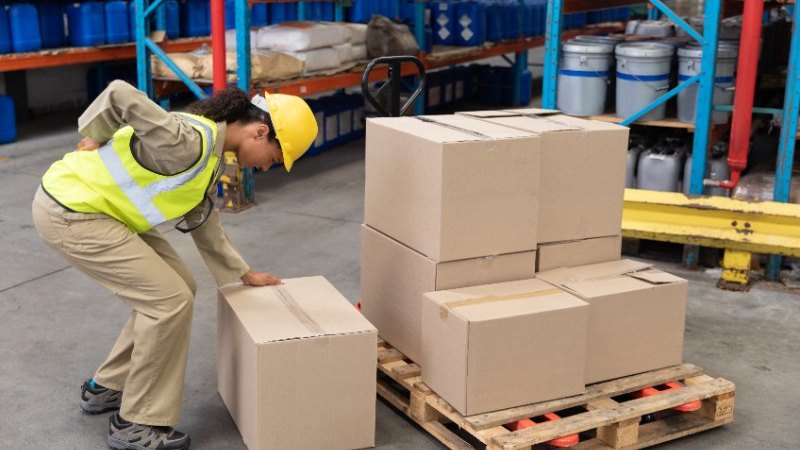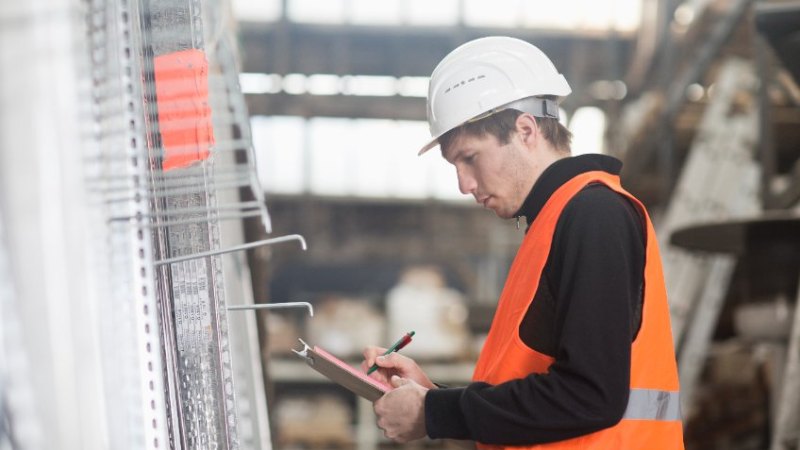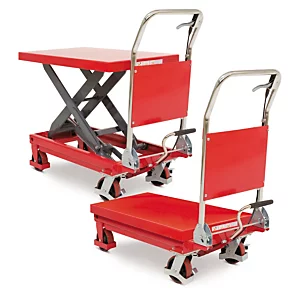Musculoskeletal disorders, also known as MSDs, are one of the most common work-related illnesses throughout Europe and an inherent risk in the logistics activities of a company. They mainly affect the back, neck, shoulders and limbs and can lead to minor discomfort and, in the most severe cases, can result in sick leave or incapacity.
According to the European Agency for Safety and Health at Work (EU-OSHA), MSDs can cost employers billions of euros, so avoiding them makes good business sense. On the other hand, minimising them helps to improve workers’ lives and has a major impact on their productivity and daily activity. To this end, EU-OSHA has launched the Healthy Workplaces 2020-2022 campaign. It aims to support the prevention of MSDs and the management of chronic work-related MSDs in the workplace by raising awareness and providing guidance on good practice to national authorities, companies and sectoral organisations.
[tocWhat is a musculoskeletal disorder?
A musculoskeletal disorder is an injury that affects muscles, nerves, tendons, ligaments, bones, cartilage or blood vessels. It is usually caused by repeated movements, such as bending, reaching or twisting, fixed postures or continuous vibration. Work-related MSDs are caused by tasks such as lifting, pushing and carrying.
These are some of the most common MSDs, along with the part of the body where they occur:
- Carpal tunnel syndrome, in the wrist.
- Rotator cuff syndrome, in the shoulder
- Epicondylitis, in the elbow
- Lumbago and low back pain, in the back
- Cervical tension syndrome, in the neck
- Hygroma, in the knee
Common symptoms of MSDs
MSDs occur when the body is exposed to too much intense physical stress or repetitive movements. These types of disorders are not immediate, but occur progressively and evolve through these phases:
- In the first phase, the pain is only felt during the working period. The worker begins to suffer from loss of strength or mobility.
- Later on, the employee notices that the pain is more significant. It starts during the working day, but continues into the evening when the employee has returned home.
- Finally, the disease is confirmed. The person is no longer able to perform his or her tasks properly.
It is advisable to consult a doctor during the first symptoms. If they are treated directly in stage three, there is a risk that these musculoskeletal disorders will no longer disappear and leave irreversible consequences.
How can MSDs be diagnosed and treated?
If an employee notices symptoms compatible with an MSD, the first thing to do is to visit a doctor for assessment and identification of his or her bodily injuries. Questions to the patient about the working conditions help to determine whether these injuries stem from the occupational activity.
Once the musculoskeletal disorder has been diagnosed, here are some of the methods used to treat it:
- Application of heat or cold. The doctor will determine the application of one temperature or another depending on the pathology to bring relief to the painful area.
- Elimination of movement. Although a change of post or position may be a solution to relieve the worker, the possibility of new MSDs must be taken into account.
- Adapted exercises. The physiotherapist can offer exercises to reduce the patient’s body tension, either at the workplace or at home.
- Medication. The use of anti-inflammatory drugs relieves pain, but these should always be prescribed by a doctor.
- Surgery. If the injuries are very serious, surgery is the last resort.

Logistics: From receipt to dispatch
Accidents at work are twice as frequent in the logistics sector as in any other sector due to the high level of physical activity. To prevent accidents, the first step is a detailed analysis of the working environment and the different tasks that take place in a warehouse:
- Receipt of goods
- Storage and organisation of products in the warehouse
- Labelling of products and their classification
- Preparation of packages or parcels
- Dispatch of goods
These tasks require numerous movements, sometimes involving the lifting and handling of heavy loads, awkward postures, sudden movements, vibrations, etc. To avoid injuries, the risks associated with each workstation must be studied and the necessary measures taken.
In the European Union, 28% of workers in the transport sector suffer from back pain and 25% from muscular pain. In Spain, between January and May 2022, 16,680 occupational accidents resulting in sick leave were recorded in the transport and logistics sector. This represents an increase of 12.15% compared to the first months of last year.

What risks can warehouse workers be exposed to?
The risks faced by employees in a warehouse are very diverse:
- Pain, tingling, heat, cramps… These are the main symptoms associated with MSDs.
- Intensive use of certain musculoskeletal areas can lead to serious injuries.
- There are also environmental constraints: draughts, too much heat or too low temperatures present potential risks for warehouse employees.
- Increased hearing fatigue if they are exposed to loud sounds and high volumes.
1. Accidents at work
Possible accidents at work in a warehouse can also be due to organisational problems: risks linked to the movement of people, trolleys, bulls and any other machines circulating in the warehouse.
- Sprains, dislocations, fractures, bruises…
- Falling of a heavy product
- Hazardous products (chemical and/or biological)
Physical restrictions
- Vibration from any warehouse machinery
- Risks of exposure to cold (e.g. in a cold store)
- Carrying objects by hand
- Prolonged standing
- Repetitive gestures
- Forced movements: spine, shoulders, elbows and wrists

What are the actions to prevent musculoskeletal disorders?
1. Regular medical check-ups
Regular medical visits are absolutely essential for such physical professions. The doctor can check the state of health of people working in a warehouse and warn in case of serious disorders, and an annual check-up is recommended.
During the medical visit, the following should be taken into account:
- The employee’s ability to bear loads exceeding 55 kg.
- That a clinical examination has been carried out to verify the professional capacity of the employees and that no symptoms such as pain or discomfort have been detected.
2. Preventive actions
MSDs can be limited by preventive and organisational actions in the warehouse:
- Train warehouse staff on the correct actions to take in the workplace.
- Organise storage areas to improve access and ensure employee safety .
- Create well-defined circulation and storageareas.
- Establish traffic rules and areas.
- Optimise works tations by placing frequently used tools closer together, and apply ergonomic criteria to the set-up of packing stations.
- Set up chairs and stools so thatemployees who have to stand up can rest.
- Install anti-fatigue mats. They are comfortable for prolonged standing, absorb shocks and improve blood circulation.
- Use the right handling equipment for each type of goods (weight, shape, volume).
- Check that shelving is in good condition to prevent goods from falling.
- Replace equipment in poor condition, such as pallets.
- Introduces the warehouse equipmentequipment to facilitate the work of the operators and prevent accidents. For example, the use of forklifts or pallet trucks to handle goods.
- Adapt work tools to the morphology of employees to reduce the occurrence of these disorders.
- It equips the company with mechanisation tools that facilitate work and avoid risks. A pallet truck allows access to goods without bending down.
- Itlimits the weight of product packages.
- It carries out medical surveillance. Employees must undergo a medical examination when they are recruited and then they should have regular check-ups.
Through these actions, the potential risks to which employees are exposed will be considerably reduced.
The 5 key points to remember:
- Warehouse workers perform a lot of physical strain and are more exposed to MSDs (musculoskeletal disorders).
- To avoid injuries, prevention is important, which involves carrying out a correct risk assessment according to the job and the tasks to be carried out, as well as regular medical visits.
- Training staff in occupational risk prevention.
- Providing employees with the resources that allow them to carry out their work in the most appropriate way (ergonomic designs, machinery, etc.).
- Organise the warehouse and workstations with a view to preventing musculoskeletal disorders.
Prevent musculoskeletal disorders with RAJA®.
We are aware of the importance of foresight to prevent MSDs before they happen, so we invite you to visit our specialised section on products for the prevention of musculoskeletal disorders. From RAJA® we want to help you so that you can work safely and that your working day is safe.















